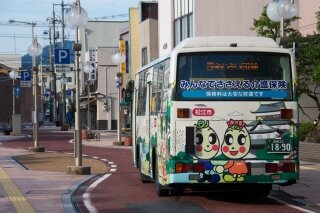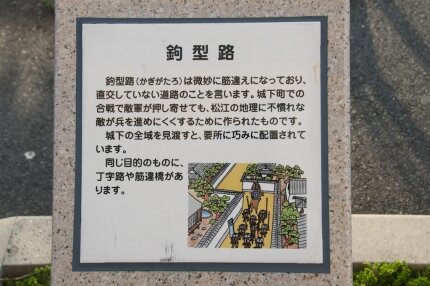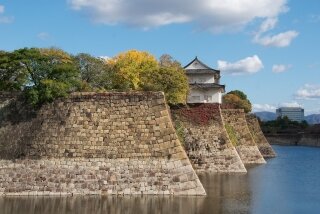I have been living in Osaka for 18th months, but what I knew about Osaka Castle one month ago was merely that “it” had been rebuilt in concrete some time ago and that there was a plum orchard. That was all. And it might be so until today if not one tweet.
I have visited the main keep twice before I moved to Osaka, but since I did so, the castle became too close. With “I can visit it whenever I want” attitude it was never on my schedule.
When my interest in Japanese history grew, I embarked on a 日本100名城 quest (100 famous Japanese castles). I have learned a great deal about the castles, their political and military significance. Every visit to a Japanese castle or its remains gave me opportunity to learn something new.
And I mean even places where a fortress once stood, but not much exists now like the Yamazaki Castle or the Kannnonji Castle.
But Osaka Castle was still too close for me.
In autumn 2011 Osaka celebrated 80th anniversary of the reconstruction of the main keep of the Osaka Castle. It was rebuilt in concrete funded by voluntary offerings from citizens. Though posters promoting the event sprung all over the city, I wasn’t really interested in the history of reconstruction itself. I might have lost a great opportunity as I turned my eye blind to the details of related events.
Then one evening I read a tweet from @glyzinie about two turrets of Osaka Castle being open to the public (which was only for a few days on the occasion of the anniversary).
Thanks to a rainy weather forecast I had no plans to travel on that weekend so I went to the castle. It immediately opened a new world to me. Actually, I went there three times over the last three weekends to explore different areas.
But first things first: Tamon Yagura, Watari Yagura and Sengan Yagura—turrets–were open to the public three weeks ago. They constitute part of a defense system for Oteguchi entrance and Dobashi earthen bridge.
While one can recognize the main functions of the turrets from outside (a potential attacker’s perspective), seeing it from inside the turret (a defender’s perspective) was a really precious experience. The thick walls with openings for guns limit the visibility, but also focus attention on particular spots.
The name Sengan Yagura is said to come from the times when Ishiyama Honganji temple stood there Oda Nobunaga troops attacked the temple. The position of the turret was so perfect for defense against attackers that it would require tremendous costs to conquer it. Sengan (千貫) comes from a name of an old currency and supposedly was used to indicate the value of the turret (roughly speaking it was almost 4 tonnes of gold).
Another original building open to the public was Kinzou—a treasure house—which is the only historic building in the main enclosure, right next to the reconstruction of the main keep. Now hosting a small exhibition with old coins, reminds that not only military or political power was in the center, but also economy.
Last weekend another three original objects were open to the public. Inui Yagura in the Western Enclosure, a storehouse for gun powder and a …hole in the ground that uncovered “mysterious stone wall” a few meters below the current level.
Inui Turret was facing castle town to the West and the river to the North (hence its name which is used to indicate this direction according to Chinese system). During the Edo period the river was main water transport artery to and from Kyoto.
Ensho-gura—the storehouse for explosives—was probably the most impressive. While the space inside was empty, its 2-meter thick granite walls were nothing I have seen so far. It was built in 1685 and no wonder that from a few dozens storehouses on the premises this one stands to this day.
In the last three weeks I have managed to make up for ignoring the Osaka Castle for so long. By walking around and discovering things I have learnt a great deal about its layout, defensive structures and operations.










